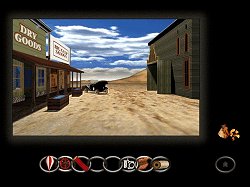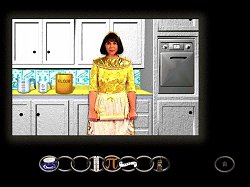|
Connections: It's a Mind Game
 History when I was young was all about Kings and Queens, and what Kings and Queens got up to. So one had to learn facts like in 1184 King Nosmo built Brighton Pavilion. In my mind's eye I saw a noble king with a diamond studded crown on his head, and a trowel in his hand. History in schools nowadays focuses on how did the ordinary people live, what was their life like, rather than who was on the throne. Arguably the name of the ruler doesn't affect most folk that much - we're more affected by technological changes. The stirrup, the water closet, the transistor; these have changed the way we live forever. History when I was young was all about Kings and Queens, and what Kings and Queens got up to. So one had to learn facts like in 1184 King Nosmo built Brighton Pavilion. In my mind's eye I saw a noble king with a diamond studded crown on his head, and a trowel in his hand. History in schools nowadays focuses on how did the ordinary people live, what was their life like, rather than who was on the throne. Arguably the name of the ruler doesn't affect most folk that much - we're more affected by technological changes. The stirrup, the water closet, the transistor; these have changed the way we live forever. James Burke is an acclaimed broadcaster with thought-provoking programmes on society and technology. He did two series of "Connections", a science-history series. Each programme took a series of apparently unrelated events and situations and wove them together to show the often bewildering way social and technological change happens. As Burke noted, "There is always a connection but, if the link has never been made before, nobody knows it's there." The second series of Connections done for The Learning Channel was followed by a CD-ROM game in 1996, which this review is about. Took us some time to get there didn't it?
The plot has the web of technological history dislocated by some sniggering evil-minded bad person. Where would we be without sniggering evil-minded bad persons making life more interesting? Links need to be found for different chains of technological developments so the web can be mended. Your quest will involve visiting five different worlds, with themes ranging from Wild West through Medieval, to Egyptian. This is a traditional adventure game, with no dead ends or risk of dying.
 You play from a first person perspective, and will encounter a range of characters from wild west gamblers to Egyptian cooks with surprisingly modern kitchens. And James Burke, too, who pops up at various points to guide you on your way. This is a slideshow game with pre-rendered graphics - the graphics are a little dated perhaps, but compensated for by the gentle spirit of whimsy throughout. You play from a first person perspective, and will encounter a range of characters from wild west gamblers to Egyptian cooks with surprisingly modern kitchens. And James Burke, too, who pops up at various points to guide you on your way. This is a slideshow game with pre-rendered graphics - the graphics are a little dated perhaps, but compensated for by the gentle spirit of whimsy throughout.
The puzzles are conventional adventure fare, mostly easy but there are one or two tricky points. There's a combination lock you have to do exactly the right way for it to open. There's a slider puzzle which is a little dubious. There is a maze so have pen and paper to hand. There is also a good in-game hint system which will do the puzzles for you if required. Most of the puzzles are inventory based, and you will grow attached to the way the game tells you "Not yet" when you try something that doesn't work.
Connections can count as edutainment, but friendly unobtrusive edutainment. As you find the missing links James Burke will be ready to comment on them and bring history to life. This is the kind of history that really appeals to me - understanding the hidden connections that have made our world the way it is. But this is an optional part of the game and you can treat it just as entertainment.
It comes on two CDs and you always need to start with the first CD. Options do not include sub-titles but you can choose your gender (didn't notice anywhere it mattered), adjust the volume, and choose whether hints are on or off. Save games are unlimited.
For this review the game was played under Classic OS9 on a Mac running OSX - the game is a hybrid release supporting both PC and Mac.
Copyright © Peter Rootham-Smith 2005.
All rights reserved.
System Requirements:
Win 3.1/95, 486/33 or higher processor, 8MB RAM, 2 x CD-ROM, hard drive, windows compatible sound card, mouse, VGA display (256 colors), MS-DOS or PC-DOS operating system version 3.1 or later, CD-ROM extensions (MSCDEX) version 2.2 or later.
Macintosh Performa, Centris, Quadra or Power Mac series with a 68040 processor or better, System 7.0 or later, 2 x CD-ROM drive, 8MB RAM, 640x480 display color monitor with at least 256 colors.
|
